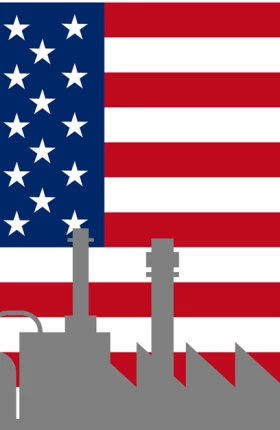For more than a decade, deciding where to build a manufacturing plant to supply the world was simple for many companies. With its seemingly limitless supply of low-cost labor and an enormous, rapidly developing domestic market, an artificially low currency, and significant government incentives to attract foreign investment, China was the clear choice.
Now, however, a combination of economic forces is fast eroding China’s cost advantage as an export platform for the North American market. Meanwhile, the U.S., with an increasingly flexible workforce and a resilient corporate sector, is becoming more attractive as a place to manufacture many goods consumed on this continent. An analysis by The Boston Consulting Group concludes that, by sometime around 2015—for many goods destined for North American consumers—manufacturing in some parts of the U.S. will be just as economical as manufacturing in China. The key reasons for this shift include the following:
Wage and benefit increases of 15 to 20 percent per year at the average Chinese factory will slash China’s labor-cost advantage over low-cost states in the U.S., from 55 percent today to 39 percent in 2015, when adjusted for the higher productivity of U.S. workers. Because labor accounts for a small portion of a product’s manufacturing costs, the savings gained from outsourcing to China will drop to single digits for many products.
For many goods, when transportation, duties, supply chain risks, industrial real estate, and other costs are fully accounted for, the cost savings of manufacturing in China rather than in some U.S. states will become minimal within the next five years.
Automation and other measures to improve productivity in China won’t be enough to preserve the country’s cost advantage. Indeed, they will undercut the primary attraction of outsourcing to China—access to low-cost labor.
Given rising income levels in China and the rest of developing Asia, demand for goods in the region will increase rapidly. Multinational companies are likely to devote more of their capacity in China to serving the domestic Chinese as well as the larger Asian market, and to bring some production work for the North American market back to the U.S.
Manufacturing of some goods will shift from China to nations with lower labor costs, such as Vietnam, Indonesia, and Mexico. But these nations’ ability to absorb the higher-end manufacturing that would otherwise go to China will be limited by inadequate infrastructure, skilled workers, scale, and domestic supply networks, as well as by political and intellectual-property risks. Low worker productivity, corruption, and the risk to personal safety are added concerns in some countries.
This reallocation of global manufacturing is in its very early phases. It will vary dramatically from industry to industry, depending on labor content, transportation costs, China’s competitive strengths, and the strategic needs of individual companies. But we believe that it will become more pronounced over the next five years, especially as companies face decisions about where to add future capacity. While China will remain an important manufacturing platform for Asia and Europe, the U.S. will become increasingly attractive for the production of many goods sold to consumers in North America.
This report, the first in a series, examines the economic trends that point to a U.S. manufacturing renaissance. It also explores the strategic implications of the shifting cost equation for companies engaged in global sourcing.






